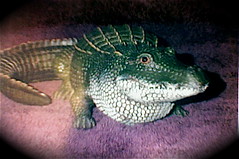One of my favorite pastimes is rifling through old notebooks. I never know what treasures will come to light, as from old trunks in the attic. Recently indulging, I discovered this: a note about a supermarket chain in Great Britain that now provides chaplains in its stores, available to meet with customers when they are shopping. I'm assuming that when they meet, it is not to talk about shopping. Rather the chaplains are there to help a growing cadre of people being overwhelmed by the sad and frightening situations around the globe and affecting their own personal lives.
I'm not really a chaplain person myself. (Besides, nothing approximating this is going on in WalMart, Sears, or Target that I know of.) But there is something else that, for me, never fails to make the pain of loss, grief, sadness, or disappointment more bearable--and that is COLOR. Chagrin and dismay siphon energy out of the mind. Color, however, strikes at the heart of bleakness, when everything we hold dear seems threatened.
Color is energy. When you see it you feel like you are walking on a trampoline. In dark times of traumatic intensity, the psychological exuberance of color is a great antidote, an animating diffuser, trenchant and refreshing, like ocean air. It is decidedly unnerving when it disappears.
Consider this marvelous description by Rick Bass, which captures the intensity of psychic shock when color suddenly returns to the world in fractured bits that sparkle, like cut glass, after the incredible abstinence of winter:
“ A single glowing bluebird, hurtling across the snow, would be too much; we would fall over backwards besmote. We have to start small, and slow; our bodies must ease back into a world of color--emerald, topaz, cobalt, oxblood, sapphire. Too much too soon and our brains would be bruised by the sudden expansion of color into a place where for so long there has been an absence."
Color touches on everything—food, interior design, clothing, painting, gardens, flowers. In murky, dolorous times when everyone is adrift and anxious about the future, the lushness and dazzle of color may just be that special thing that can save us. One could even argue that color is a fractal for letting the angel out. Yet in our culture, we have largely stripped ourselves of meaningful rituals that needlepoint colors into the very air. I am still nudged toward intoxication merely thinking about a picture I once saw of a festival in Hyderabad, in which teenagers showered each other with brilliant powdered cerise dye to color their skin and clothing bright pink. Decades after the fact, I can still remember the thrill of walking through a crowded street bazaar in Old Delhi and reveling in the baskets of pomegranates and limes, the flower garlands and children’s hats, bananas, pineapples, and cabbages. Compared with this collage of colors colliding, mingling, and multiplying indefinitely, the monotony of supermarket shopping doesn’t cut the mustard. No wonder chaplains are being called in to the rescue.
I am a regular dingbat when it comes to color—the more flamboyant the better. Color is total immersion and emotional involvement. Ornaments, tassels, textures, pompons, sequins, florescent hues, galvanize my creativity. Just the blue upsurge of indigo dye on a moving ruffle can turn me into a baby bacchante.
So where did my culture lose me exactly? Perhaps it was years ago, somewhere on Wall Street, as I stood among gray buildings and gray suits, in a place where there is hardly even a flicker of color in anyone’s thoughts.
The truth is I had never really thought about how meanings gather around color the way lint might collect on a coat. Red, for instance, can be dangerously Dionysian when it relates to the color of blood, or love. But then, it is oddly perfunctory when it designates a traffic stop sign, or the knotty bureaucratic procedures associated with red tape. Are these interpretations “arbitrary”? How do we begin to adjudicate among the “play of interpretations” and conflicting claims? What gives any interpretation its legitimacy? Perhaps it is what Umberto Eco calls a kind of cultural Darwinism: certain readings prove themselves over time to the satisfaction of the relevant community. Can several interpretations be true at the same time, even if they contradict each other?
Exactly what it is that shapes our notion of color? There are so many interesting questions to think about here. Should we consider color as a moving creative force or as a static thing? Are colors adjectival—merely signifiers or qualifiers—or are they rather, as Annie Dillard puts it in one of her poems, “the real foundation of everything”? As far as I am concerned, a life without color is only half a life. The world is color. So the question I would really want to ask here is: Why is the modern world so indifferent to the spiritual power of color? And why are so many people willing to live without its inspiring presence?
Sunday, March 9, 2008
Subscribe to:
Post Comments (Atom)

1 comment:
An ancient Persian poet wrote the following"
"If of they mortal goods thou art bereft,
And from they slender store two loaves alone to thee are left,
Sell one, and with the dole,
Buy hyacints to feed thy soul."
Ahh, the colors, the aroma of spring - surely, dearest Suzi, he would agree with you. As do I.
Post a Comment